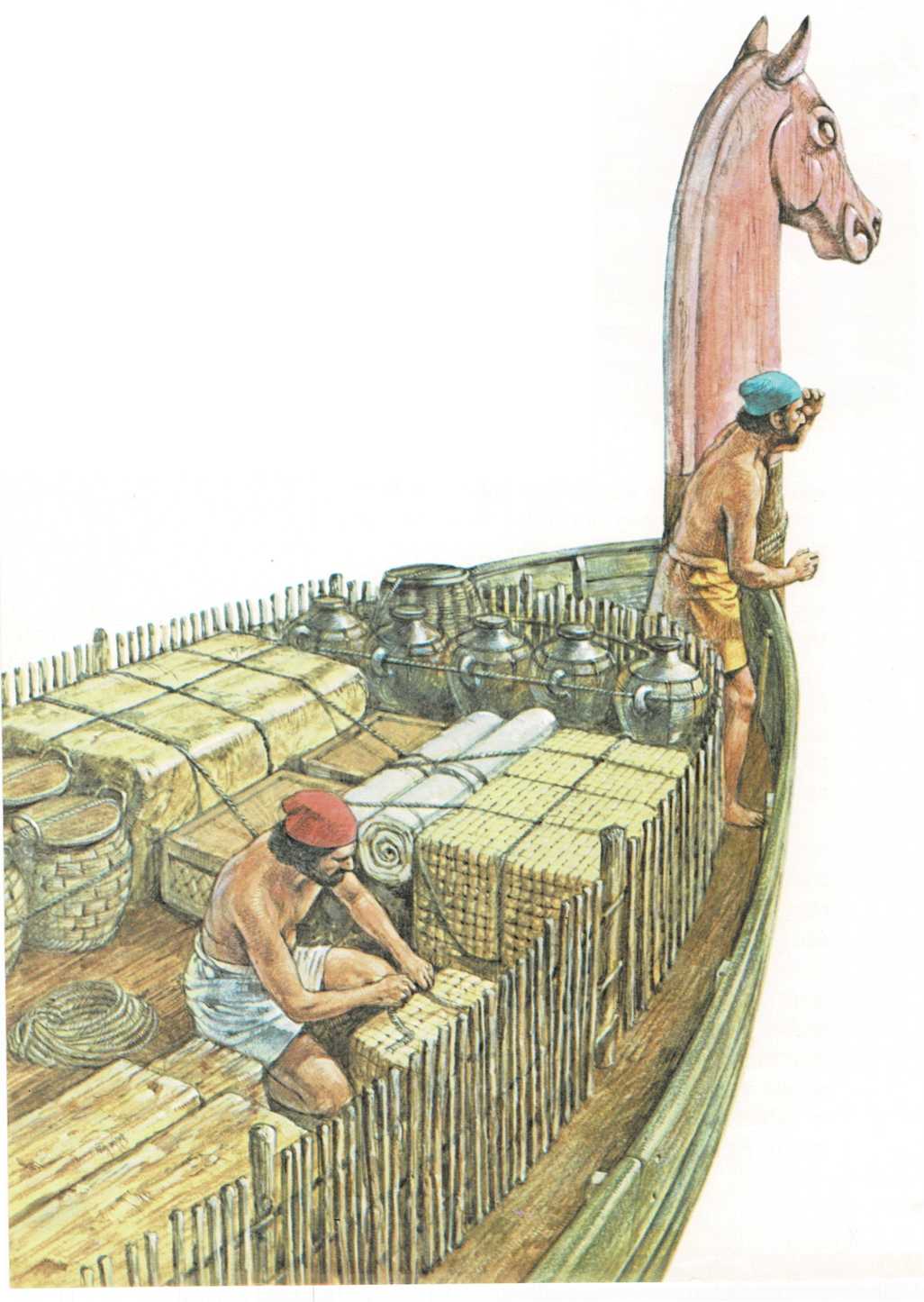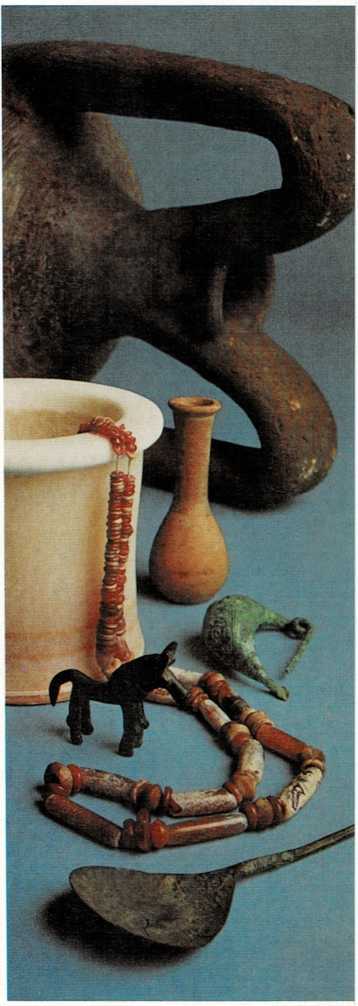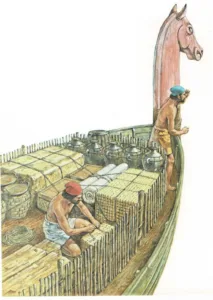
Sea traders
Eight thousand years ago, a small, crude ship headed toward a little
village on the coast of the land we now call Greece. The men on the ship
were in high spirits. They had something very valuable, something that
would make them all wealthy!
The little ship carried a load of shiny black stone—a stone we call
obsidian (ahb [sihd]{.smallcaps} ee uhn). Obsidian was wanted by people
throughout Greece. At that time, all tools and weapons were made of
stone. And obsidian was the best stone people could get. It was easily
chipped to make sharp knives, axes, and spearpoints.
But obsidian was hard to get. It came from the island of Melos, far to
the south. A voyage to Melos was very dangerous. This made the obsidian
very valuable.
In those days, there was no such thing as money. People traded for the
things they wanted. A chunk of obsidian might be worth a basket of wheat
or several fine animal skins. The sailors who had obsidian to trade
could become wealthy.
Those sailors of eight thousand years ago are the first sea traders we
know of. Ever since, trading ships, called merchant ships, have sailed
the seas, carrying goods from one land to another. The buying and
selling that is done is still known as “trade.”
The most famous traders of ancient times were the merchants of Phoenicia
(fuh [nih]{.smallcaps} shuh). Phoenicia lay along what is now the coasts
of Syria, Israel, and Lebanon. And the merchant ships of Phoenicia
traveled all over the Mediterranean Sea.
The Phoenicians traded purple cloth, glass, wine, and cedarwood for
things that were of use to them. And because they braved the dangers of
the sea, their cities became wealthy and famous.

All of these items were traded by ancient merchants who sailed the
Mediterranean Sea.
A long line of ships lay rocking gently on the waves. The ships were
really little more than big rowboats, about 120 feet (36 meters) long
and twenty feet (6 m) wide. On each side there were three rows of oars,
one row above the other. They were the kind of ships we call triremes
[(try]{.smallcaps} reemz), meaning \”three oars.”
The rowers—170 of them—sat nervously gripping the wooden shafts of
their oars. Small groups of men in bronze and leather armor, armed with
spears or bows, stood about on the deck.
These were ships of war! The Greek navy was awaiting the coming of the
enemy!
The time was about 2,500 years ago. The Mediterranean Sea was now a
\”highway” upon which many ships traveled. No land was safe against an
invasion from the sea. And so, navies had been born—fleets of ships
whose purpose was to fight off invaders or to carry soldiers from one
place to another.
Little Greece had been invaded by the vast forces of the Persian Empire.
The Persian army had already captured and burned Athens, the main city
of Greece. And the great Persian fleet was now at anchor nearby.

